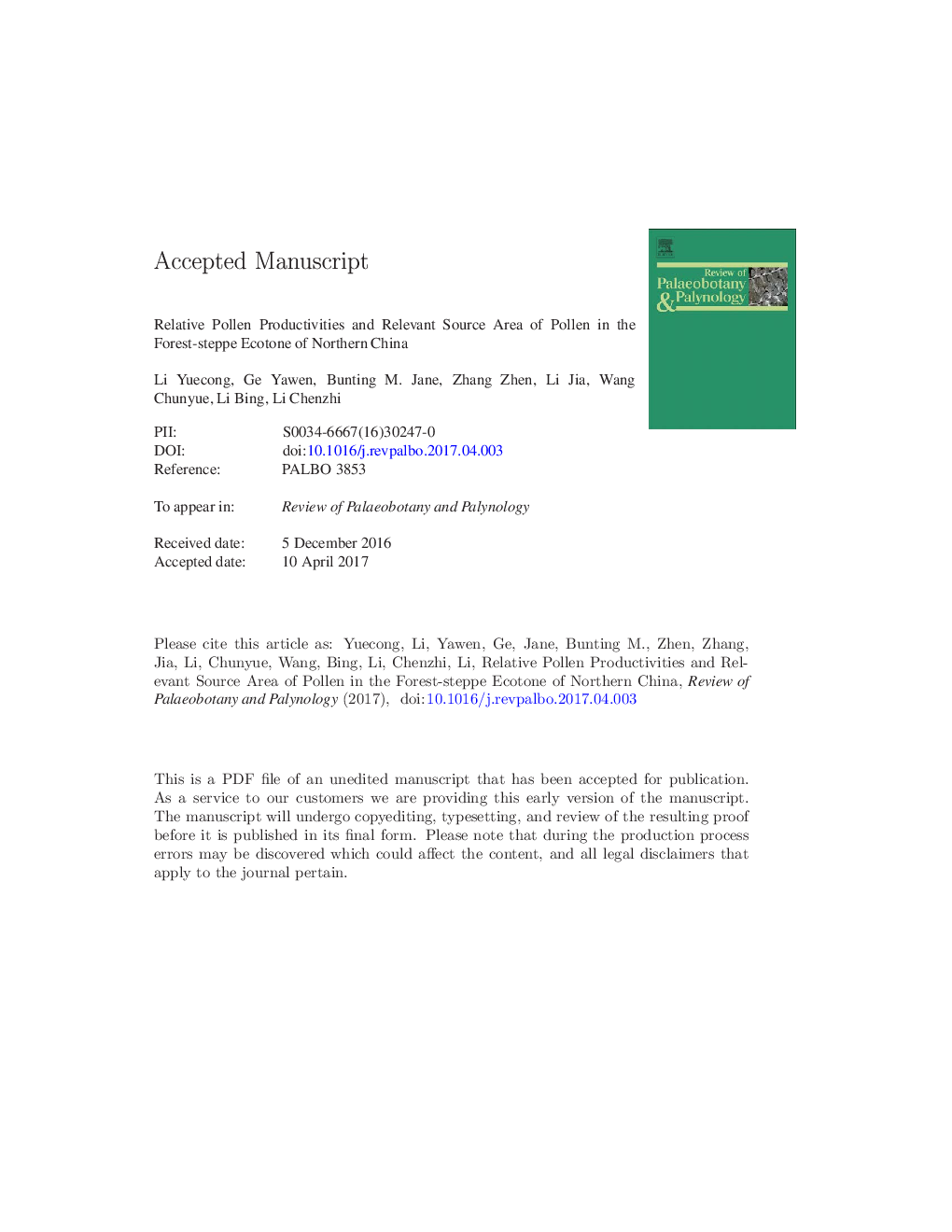| کد مقاله | کد نشریه | سال انتشار | مقاله انگلیسی | نسخه تمام متن |
|---|---|---|---|---|
| 5788354 | 1642453 | 2017 | 51 صفحه PDF | دانلود رایگان |
عنوان انگلیسی مقاله ISI
Relative pollen productivities and relevant source area of pollen in the forest-steppe ecotone of northern China
ترجمه فارسی عنوان
تولید گرما نسبی و ناحیه مربوط به گرده در اکوتون جنگل و استپ شمالی شمال چین
دانلود مقاله + سفارش ترجمه
دانلود مقاله ISI انگلیسی
رایگان برای ایرانیان
کلمات کلیدی
تولید گرده نسبی، منبع اصلی مربوط به گرده، الگوریتم بازسازی چشم انداز، تکنیک آنالوگ مدرن، اعتبار مدل گرده-گیاهی
موضوعات مرتبط
مهندسی و علوم پایه
علوم زمین و سیارات
فسیل شناسی
چکیده انگلیسی
Modeling efforts to quantitatively reconstruct vegetation from pollen have never been attempted along the forest-steppe border of China, however such studies are important in interpreting fossil pollen assemblages of vegetation change along this ecotone. In this paper, relative pollen productivity (RPP) and relevant source area of pollen (RSAP) as two important parameters in quantitative vegetation reconstruction using the LRA (Landscape Reconstruction Algorithm approach) model, are estimated from the forest-steppe ecotone north of Shanxi, China, where pollen sampling and vegetation survey were performed at 18 random sample sites. The pollen analysis results show that Artemisia, Asteraceae, Poaceae, Pinus, Picea, Quercus, Betula and Hippophae dominate the pollen assemblages with more than 80% proportion. ERV (Extended R-value) analysis showed that the RSAP is about 600Â m and that around 50% of the pollen in each sample comes from beyond this distance. RPPPoaceae (pollen productivity relative to Poaceae) is estimated as more than 10 for Pinus and Hippophae and around 5 for Picea and Betula. Estimates for Artemisia (3-4) are substantially lower than those reported from other studies in the steppe biome, and for Quercus (0.5) are substantially lower than those from the forest biome in north-east China or Europe. Four additional samples were then used to test the effectiveness of two different methods for reconstruction of vegetation proportion from pollen assemblages, the Landscape Reconstruction Algorithm (LRA) and the Modern Analogue Technique (MAT) showed that both methods can give generally reasonable results with similarity index more than 0.6, but there is still some discrepancy between the two methods.
ناشر
Database: Elsevier - ScienceDirect (ساینس دایرکت)
Journal: Review of Palaeobotany and Palynology - Volume 244, September 2017, Pages 1-12
Journal: Review of Palaeobotany and Palynology - Volume 244, September 2017, Pages 1-12
نویسندگان
Li Yuecong, Ge Yawen, Bunting M. Jane, Zhang Zhen, Li Jia, Wang Chunyue, Li Bing, Li Chenzhi,
